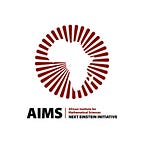Creating virtual diseases to cure infections
Prevention is better than cure — a saying that every school child knows well. But how do we use mathematics to prevent a disease?
The human body has an incredible innate ability to remember pathogens (disease agents) that it has previously encountered, which gives it the ability to fight off infections from the same pathogens in later attacks. Vaccination uses this same principle by creating and introducing an “artificial disease” in an individual through carefully designed pathogens, in order to train the body to fight off later attacks. For this to be effective, these “fake infections” must resemble the real disease so closely that they trigger a strong immune response in the body.
Traditionally, vaccines have been created in laboratories, which causes a range of limitations. Researchers often do not know what the actual components of pathogens that result in a disease response are, and they do not fully understand the mechanism of the disease. Lab work is also often not suitable for particular types of diseases, and can be time-consuming and expensive.
By leveraging vast amounts of available biological data, made possible by fantastic new technology, Degoot (a postdoc Researcher at AIMS) is part of a team that makes use of mathematics, statistics and computation tools to predict the proper parts of pathogens that will drive a potent immune response. “The results will help and guide immunologists to design efficient vaccines, as well as reduce the time period needed to develop vaccines,” says Degoot.
This article was first published as part of the #theArtofResearch programme by Jive Media Africa
